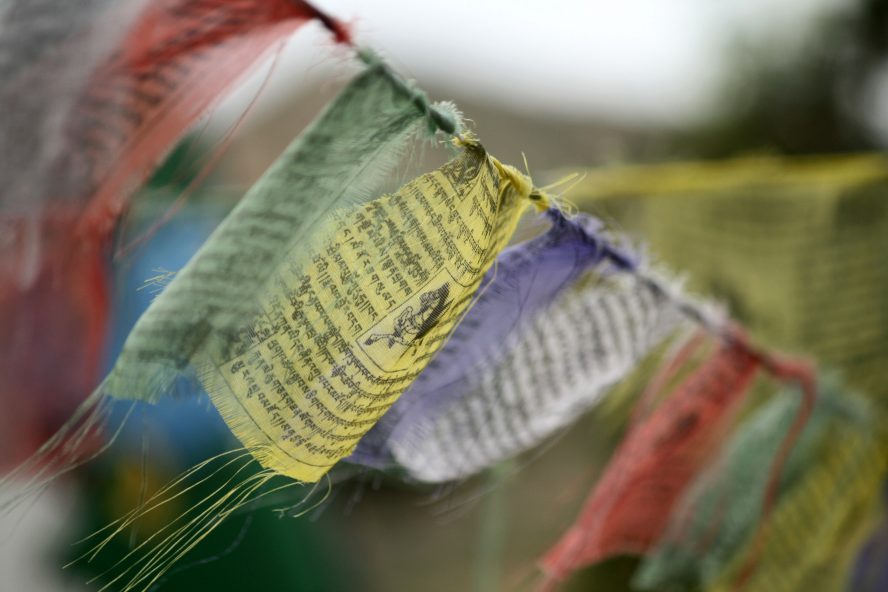This beautiful piece of writing was chosen by your 2017 Ytravel Travel Writing Competition Judges as our winner. Congratulations to Janet Irmler from West Ryde in Sydney – we hope it inspires you to even more writing!
In an old neglected part of Kathmandu, many curiosities can be found within the darkened alleys and tattered buildings. Once such curiosity was Manju Shrestha.
Manju is a shaman and I had searched for a shaman during my time in Nepal. Rather than going on an organised shamanistic tour full of tourists, I wanted to find a traditional one and have the opportunity to spend one-on-one time with them.
Shamanism is an ancient practice of divine healing. A shaman can move into an altered state of consciousness allowing them to contact the spirit world to bring healing into our world. Shamans claim they can heal those who are physically, mentally and emotionally unwell during a trance. People also see shamans to protect their homes and crops.
It’s believed that this practice has existed for tens of thousands of years identified from cave paintings. The word Shaman itself originated from the Tungus tribe in Siberia meaning “one who knows”.
The host at my hostel, Jeevan, found her by asking a number of his friends. He was gracious enough to take me to her home. From the familiar tourist streets of Thamel, we rode by motorbike through local streets littered with potholes, fruit markets and family run fabric and hardware stores. In an instant, I was out of my comfort zone but had complete trust in Jeevan.
We stopped by an old building that looked abandoned. There was a moist aroma in the air. From a dark corridor we climbed up rickety stairs to reach a doorway. We were greeted warmly by a middle-aged woman, “Namaste, aap kasi ho” Hello, how are you? Before she ushered us into her healing room. There was a large window which brought in much-needed sunlight. Beneath the window was a shrine surrounded by offerings and burning incense. The woodsy scent of the incense delicately filled the room. The floor was covered in bright yet worn cushions and blankets. It was a cozy room but I felt a little uncomfortable. I had no idea what to expect. Jeevan stayed with me, assisting me with the translations.
Manju is 43 years old and speaks only Nepali. She’s originally from the Dhading District but now resides in Kathmandu. Although shamans are generally the central figures in their communities, she appeared to be reserved and very humble which differs to reading about extroverted characters as shamans are known to be.
She recalls a time when she was 30 years old. She was home on a Saturday night and at exactly 9pm, she felt a change. It was like a gust of wind went through her. She felt God enter inside of her, giving her healing powers. Manju wasn’t particularly a spiritual person at the time and wondered why she had been chosen. But she knew what she had to do, it was her calling to heal people. Her family was initially afraid of her until they understood what had happened. She’s been now practicing shamanistic healing for 13 years. Many people come to see her and she proclaims she has cured cancer as she proudly showed me some of the gifts that grateful clients have given to her such as necklaces and trinkets.
I sat down cross-legged on a cushion in front of her and gave her a bag of rice. She placed the rice into a bronze plate and initiated for me to put some money on the rice. I placed 50 rupees down and she began chanting and praying in a language that, to my naïve ears, sounded like Nepali. Jeevan later cited, “No that wasn’t Nepali as I didn’t understand it. It’s a God-like language that only shamans understand”. It was a sweet sound but her face was full of concentration.
It looked like Manju was going into a trance. Her eyes closed and after a short time, they opened again. Her eyes were wide open fixated on something to the right side of me. It was as if she had channelled into the spirit world.
After a few minutes of chanting, without her knowing what my ailment was, she rubbed her lower left back indicating that was my injury. She was correct. I had strained my lower left back muscle many years ago. My doctor told me it would never heal but I refused to believe him and tried many treatments from the western world to the holistic world. Nothing had worked so I turned my attention to shamanism.
Manju took some rice from the plate and blessed me in a cross formation before taking some water and sprinkling it on my face. She then blessed the room with the rice, throwing some inside the room and some outside the window.
She indicated for me to expose my left lower back. While chanting, she rubbed oil on it. Her hands were warm and soothing. When she produced a bronze knife from behind her, I became a little concerned. She used the knife to touch the afflicted area, then continued to rub more oil. I discovered later that the knife is a vessel to communicate with the higher spirits.
Once the process was finished, she advised me to rub some mustard oil (or Tiger Balm as Jeevan suggested) into the area every night and that it will take time for the muscle to heal.
I thanked her in Nepali “Dhanyabhad” for her time and service and paid her a generous donation. As we left, I realised that I had lost all concept of time. Jeevan mentioned that we were there for about 30 mins. It felt much longer. My mind may have shifted during the process but physically I felt no different.
Over time, my back did feel less problematic but I still get an ache if I’m not mindful of my movements. It may not have been a miracle cure I had hoped for but I still hold a strong belief in the holistic way of healing. To begin, one must believe.
Janet Irmler is an Executive Assistant within the corporate world but only to fund her passion for travelling. She has a love of photography and writing and enjoys learning about different cultures. After completing a travel writing course, her goal is to write a book about her travel experiences.


